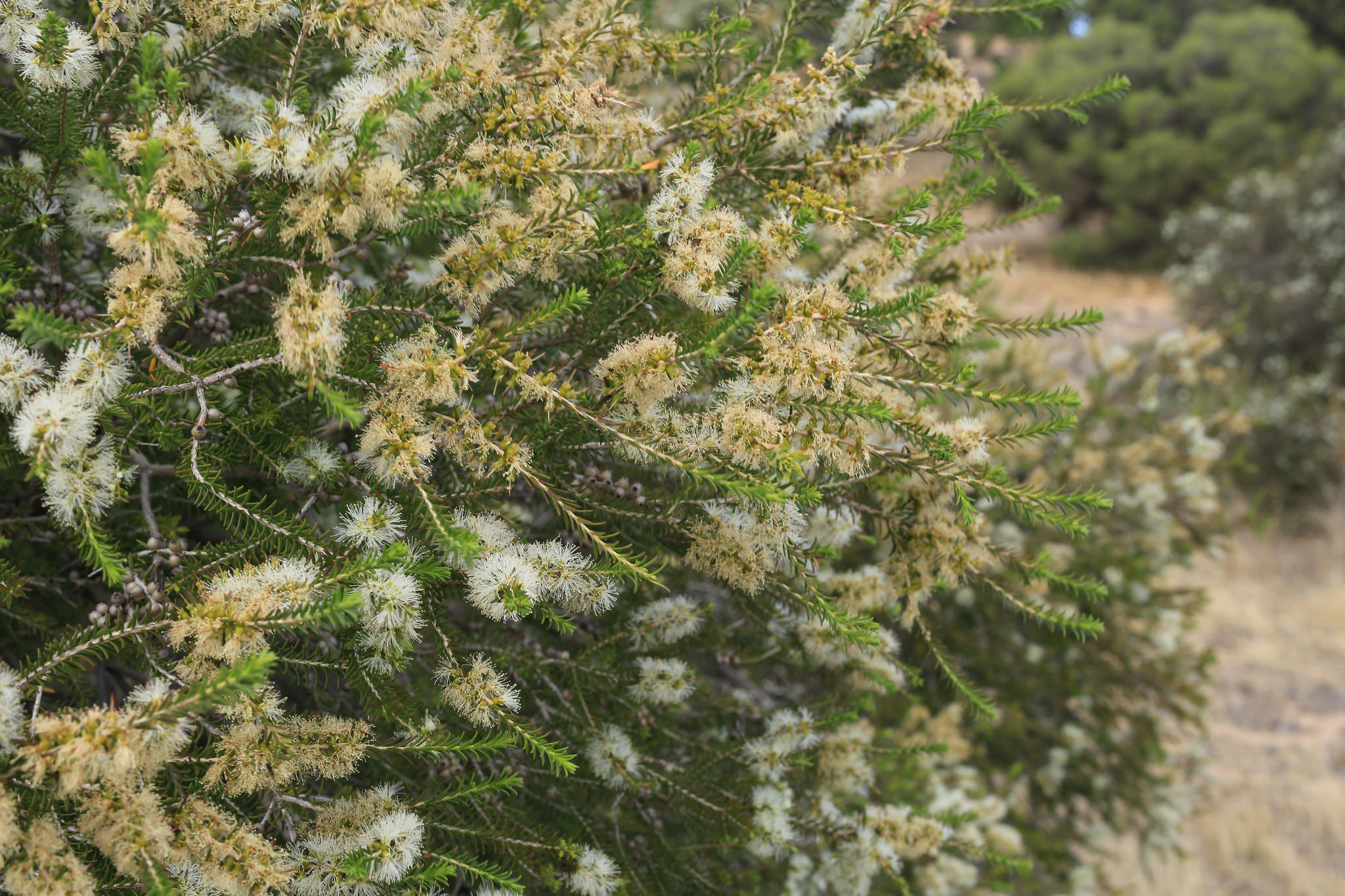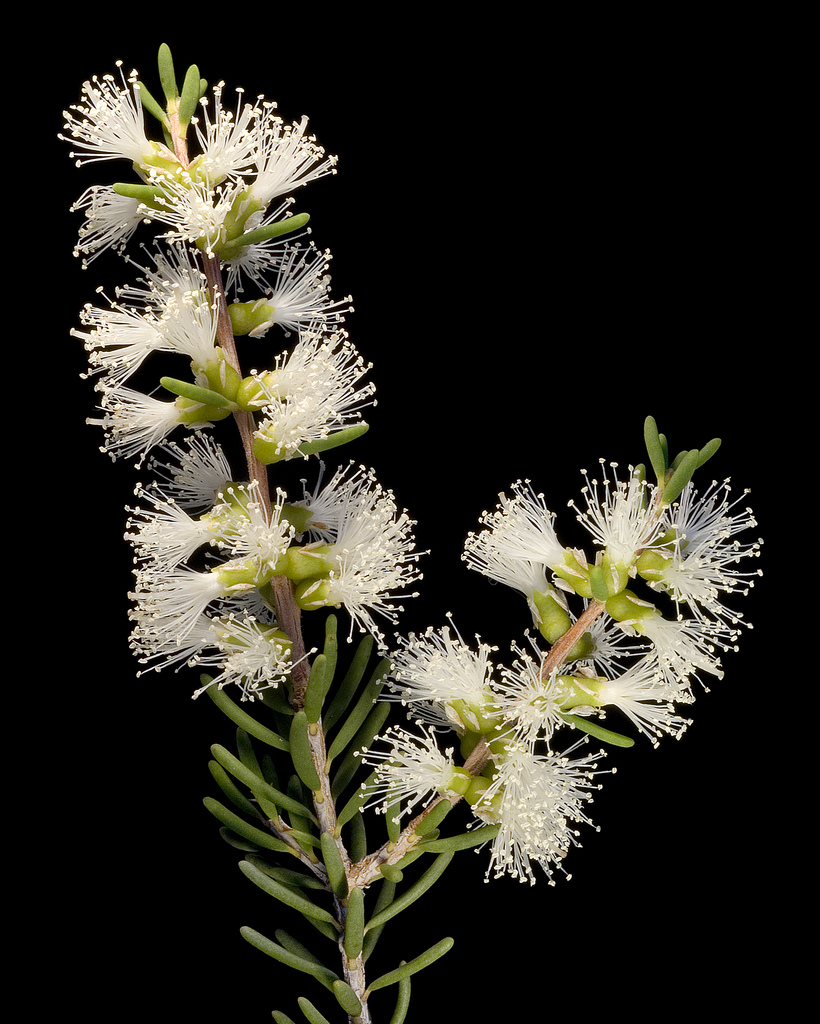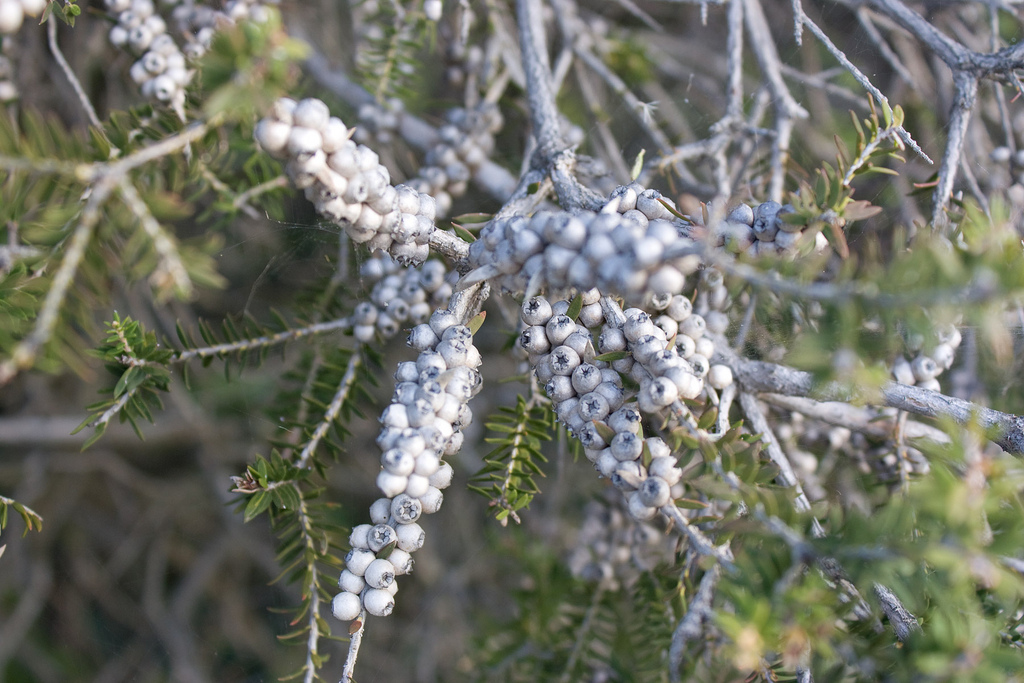Moonah
Shrub or small tree to 10 m high with hard, rough bark, dark grey bark on a trunk that is often twisted and bent by the effects of wind. Bark hard, fissured, slightly papery or flaking.
Leaves
Arranged alternately, linear to narrow-elliptic, 5 – 15 mm long and 1 – 3 mm wide.
Flowers
White or cream coloured and arranged in many-flowered spikes 2–4 cm long.
Field Guide
Improve your identification skills. Download your Moonah field guide here!

What to Observe
-
First fully open single flower
-
Full flowering (record all days)
-
End of flowering (when 95% of the flowers have faded)
-
Not flowering
-
Open seed pods
-
No fruits/seeds/pods

When and Where
When To Look
- Year round
- Flowers mainly appear in summer months
- Fruits appear after flowers
- Mature seed capsules are maintained on plants throughout the year
Where To Look
- NSW, Victoria, South Australia, Queensland and Western Australia
- Along coastal dune systems and drainage lines
- Also grows in mallee or open woodland communities on clay soils; widespread in drier areas

What Else?
Moonah trees are often twisted into unusual shapes, may range in height and live for around 300 years.

